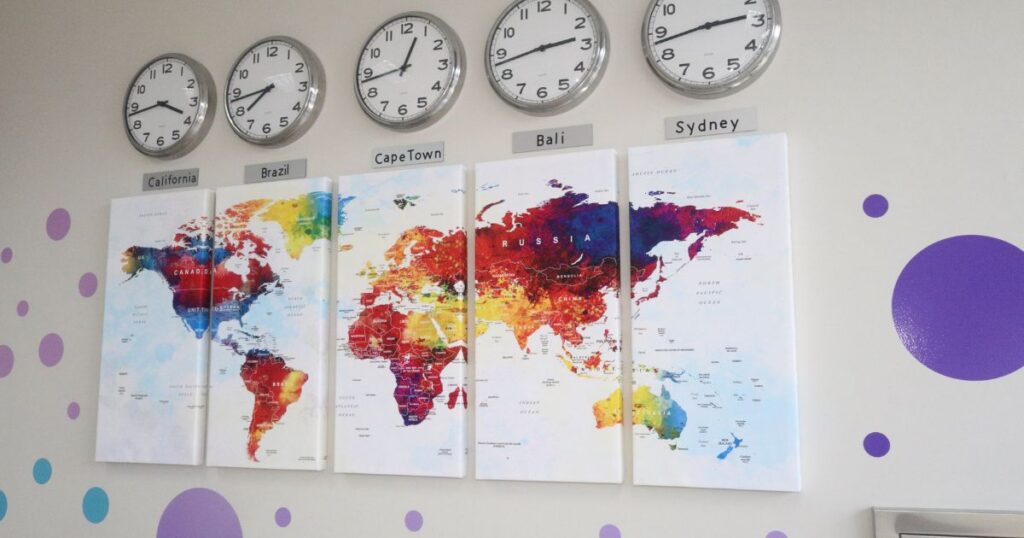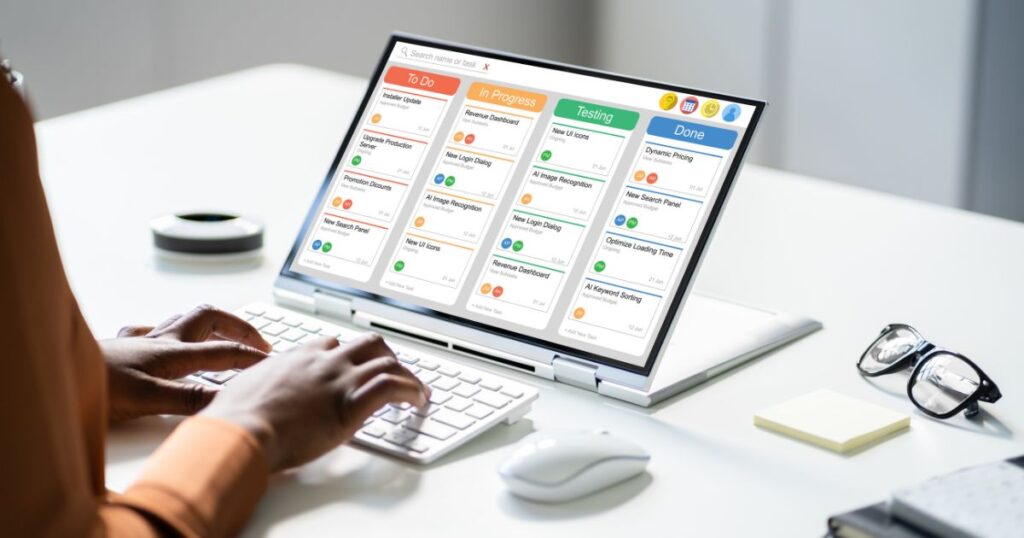Hybrid work is no longer an emerging trend, it is a firmly entrenched reality across the professional landscape. Particularly in project environments, the integration of remote and in-office contributors, long familiar to global delivery models, has become the operational baseline. What was once concentrated in offshore development contexts has now become a universal norm, accelerated by the structural shifts during the pandemic.
This distributed working mode presents project managers with both new opportunities and evolving challenges. Chief among these is the need to maintain alignment and cohesion across teams that may never share the same physical workspace. In such settings, establishing clear protocols for communication, task ownership, and accountability becomes essential, not optional.

Moreover, hybrid delivery models demand more than just logistical coordination; they require intentional efforts to preserve engagement and cultivate trust. Ensuring that all team members, regardless of geography, feel seen, heard, and empowered is a critical success factor in complex project delivery.
At 29FORWARD Australia, we work closely with organisations to embed these principles into their operating models, helping leaders navigate hybrid complexity with clarity and confidence. From strategic frameworks to on-the-ground execution, we ensure hybrid project environments remain agile, accountable, and outcome-focused.
1. The Unique Challenges of Hybrid Project Teams
Communication Barriers
In hybrid teams, effective communication is not simply about frequency, it is about appropriateness. With in-person cues removed, the risk of misinterpretation increases, particularly when complex or sensitive topics are handled through channels that lack nuance. Choosing the right communication medium is essential—instant messaging may be efficient for quick updates, but nuanced discussions or strategic decisions may warrant structured video calls or written summaries that allow for reflection.
Equally important is understanding when formality is required. A casual message can undermine the seriousness of a decision, while excessive formality in informal contexts may create distance among team members. Establishing agreed communication protocols helps strike the right balance between speed and substance, reducing friction and fostering trust.
However, while hybrid teams benefit from individuals who can work autonomously, too much independence can lead to isolated decision-making. When communication norms are unclear, team members may default to working in silos, inadvertently limiting collaboration and shared problem-solving. At 29FORWARD Australia, we guide teams in defining communication rhythms and selecting appropriate tools and formats to ensure clarity, alignment, and inclusion across every project stage.
Time Zone Coordination
Managing time zones is no longer a marginal issue—it is central to daily operations in hybrid teams. Coordinating real-time collaboration across global locations demands rigorous scheduling discipline and inclusive meeting practices. Without thoughtful planning, key contributors may find themselves excluded from critical conversations or required to attend outside of reasonable working hours, leading to disengagement and fatigue. Smart calendar management, shared availability tools, and rotating meeting times are essential in building equity and reducing friction.
Technology Selection and Enablement
Rather than focusing solely on individual proficiency, the more pressing challenge lies in selecting and standardising the right suite of digital tools that support seamless collaboration. A poorly chosen stack can lead to inefficiencies, duplication of effort, or information silos. Tools must be fit-for-purpose, accessible to all team members regardless of location, and embedded into day-to-day workflows. At 29FORWARD Australia, we help organisations assess and implement the right collaboration platforms—ensuring their toolsets are scalable, secure, and aligned with project needs.
Cultural and Departmental Silos
Hybrid environments can unintentionally foster division, particularly when teams cluster based on physical location, functional expertise, or reporting lines. This can create echo chambers and undermine cross-functional collaboration. It is critical to foster a unified team culture through intentional relationship-building, shared values, and project-wide rituals that connect all contributors regardless of where they work. Leadership visibility and inclusive practices play a vital role in breaking down silos and ensuring that every voice has a seat at the table.
These challenges require intentional management to avoid performance dips and fractured team dynamics.

2. Essential Strategies for Leading Hybrid Teams
Effectively managing hybrid project teams requires deliberate leadership practices that account for the unique challenges of distributed work. Leaders must go beyond traditional management approaches, embedding strategies that foster engagement, clarity, and cohesion across geographically dispersed contributors.

Establish Clear Expectations
Clarity is non-negotiable in hybrid environments. Roles, responsibilities, and deliverables must be explicitly defined, avoiding assumptions that typically resolve themselves through casual in-office interactions. Setting performance expectations, response times, ownership boundaries, and escalation procedures helps to build shared accountability. Without this clarity, team members may misalign on priorities or duplicate efforts, leading to frustration and inefficiencies.
Build Communication Practices That Drive Engagement and Inclusion
Effective communication in hybrid teams is not only about information exchange, it is about connection. Leaders should intentionally design communication rhythms and practices that foster active participation and mutual respect. This includes structured agendas, rotating facilitation roles, asynchronous updates, and ensuring all voices are heard—not just those in the room or in the dominant time zone. When done well, inclusive communication boosts morale and strengthens collaboration, reinforcing team cohesion even when members rarely meet in person.
Address Psychological Safety with Intention
Psychological safety is a foundation of high-performing teams, but in hybrid settings, it is more vulnerable. When meetings, conversations, and decisions occur without informal cues or hallway context, individuals may be less likely to speak up or raise concerns, particularly those newer to the team or located remotely. Leaders must compensate for this distance by actively inviting feedback, clarifying decision-making processes, and following up with those who may be hesitant to contribute in group forums. In hybrid environments, psychological safety cannot be assumed—it must be actively cultivated.
Leverage Technology with Purpose
Technology should be an enabler, not an obstacle. The selection and implementation of collaborative tools must be intentional, ensuring they are fit for the team’s workflow, accessible to all members, and easy to integrate into day-to-day activities. Rather than overwhelming teams with a patchwork of disconnected tools, organisations should prioritise platforms that streamline communication, documentation, task management, and knowledge sharing. At 29FORWARD Australia, we assist clients in evaluating, configuring, and embedding the right toolsets for sustainable hybrid team success.

3. Tools and Technology for Seamless Collaboration
Hybrid project teams rely heavily on digital infrastructure to stay connected, aligned, and productive. However, the effectiveness of these tools depends not only on their capabilities but also on how well they are integrated into daily workflows. Below is a curated list of collaboration tools grouped by function, with a focus on practical benefits and suitability for different team needs.
Team Communication
Efficient communication underpins hybrid teamwork. These platforms help facilitate consistent dialogue, file sharing, and structured discussions.
- Slack: Offers real-time messaging with dedicated channels for topics, clients, or teams. Its wide range of integrations and low barrier to use make it ideal for fast-moving projects.
- Microsoft Teams: A robust solution that combines chat, video, and collaboration tools within the Microsoft 365 ecosystem, ideal for organisations already using SharePoint or Outlook.
- Discord: Originally built for gaming, it has found a niche in tech teams due to its voice channels and low-latency communication features.
Virtual Meetings and Video Conferencing
Meetings are a vital touchpoint in hybrid delivery, and choosing the right platform can impact inclusivity and engagement.
- Zoom: Known for its reliability and breakout room functionality, Zoom is suitable for both team meetings and large-scale virtual events.
- Google Meet: Integrated seamlessly with Google Workspace, it is a lightweight option for quick meetings and internal stand-ups.
- Webex: Offers enterprise-grade security and analytics, favoured by industries with stringent compliance requirements.
Project and Task Management
These platforms help hybrid teams visualise project progress, assign ownership, and meet deadlines without micromanagement.
- Asana: Known for its intuitive timeline and board views, Asana supports structured task tracking and dependency mapping.

4. Building Operational Discipline in Hybrid Projects
While flexibility is often seen as a strength of hybrid teams, it must be underpinned by operational discipline to ensure consistent delivery and stakeholder confidence. Without clear structure, hybrid working can easily slip into fragmentation and misalignment.
Set Operating Rhythms
Consistent, repeatable routines are vital in a hybrid setting. Whether it is weekly planning meetings, midweek check-ins, or end-of-cycle reviews, predictable cadences create clarity and reduce ambiguity around progress and priorities.
Define Decision-Making Models
In the absence of physical proximity, decision-making processes must be codified and visible to the team. This includes who makes which types of decisions, how consensus is reached, and when escalation is appropriate. Making these models explicit builds trust and accelerates alignment.
Document as a Default
Hybrid teams benefit from written documentation that captures decisions, context, and rationale. This reduces dependency on synchronous communication and supports continuity when time zones or schedules don’t align. Knowledge management tools such as Confluence or Notion can support this habit.
Measure What Matters
Performance tracking should not rely on visibility or presence, but on agreed outcomes. By aligning around results rather than activity, teams can maintain accountability without micromanagement. Dashboards, KPIs, and regular reporting cycles help reinforce focus and transparency.
At 29FORWARD Australia, we work with clients to embed these foundational practices, ensuring hybrid delivery models remain structured, predictable, and outcome-oriented.

5. Measuring Success in Hybrid Project Teams
Effective measurement in hybrid environments requires a broader lens than traditional performance metrics. With teams working across time zones, tools, and contexts, success must be defined not just by outcomes, but by how those outcomes are achieved—sustainably, collaboratively, and with alignment.
Balance Between Collaboration and Focus Time
High-performing hybrid teams require space for deep, uninterrupted work, as well as opportunities for real-time collaboration. Tracking the ratio of scheduled meetings to individual focus time can highlight imbalances that may hinder productivity. Excessive meetings, especially in overlapping time zones, can contribute to fatigue and diminish performance.
Tool Adoption and Platform Utilisation
Measuring whether digital collaboration tools are being effectively used—not just accessed—can reveal gaps in enablement. Analytics from platforms like Teams, Asana, or Miro can show whether key features are supporting project delivery or being underused due to lack of training or unclear workflows.
Outcome-Oriented Productivity Metrics
Tracking task progress using planned versus completed activities remains a cornerstone of hybrid performance. However, layering in qualitative insights, such as blockers and cross-team dependencies, provides richer context. Dashboards that measure cycle time, backlog health, or delivery velocity can be especially valuable in complex project environments.
Engagement and Sentiment Monitoring
Hybrid teams may not display early warning signs of disengagement as readily as co-located ones. Regular pulse surveys, team check-ins, and one-on-one sessions are essential to gauge emotional well-being, psychological safety, and alignment. Analysing patterns of feedback over time helps leaders detect emerging morale issues before they affect delivery.
Communication Quality and Responsiveness
Monitoring the effectiveness of communication—such as email response times, message clarity, or missed meeting actions—can highlight issues in coordination. Poor responsiveness or misaligned expectations are early indicators of risk in hybrid teams.
Retention and Participation Trends
Staff turnover, absenteeism, and passive meeting participation can all signal systemic issues. In hybrid settings, where visibility is reduced, these data points become critical for understanding team health and cohesion.
Client and Stakeholder Satisfaction
Measuring how internal or external stakeholders perceive progress, responsiveness, and deliverable quality provides an outside-in view of team performance. Regular stakeholder feedback loops, combined with structured reporting, ensure that hybrid delivery remains aligned with business expectations.
At 29FORWARD Australia, we help organisations define meaningful hybrid success metrics—balancing quantitative data with contextual insight to support high-performance delivery across distributed teams.

Frequently Asked Questions – Managing Hybrid Teams
In hybrid teams, performance measurement should shift away from time-tracked metrics toward outcome-focused KPIs. Examples:
- Task Completion Rate: % of tasks completed on time. Use story points or time forecasts for fairness.
- Collaboration Metrics: Track joint document edits, cross-functional participation, and @mentions in tools like Teams or Slack.
- Employee Engagement: Conduct regular 1-on-1s to assess motivation, surface issues, and foster mentorships.
- Clear Goals: Everyone should know what success looks like.
- Flexible Working Windows: Allow deep work during peak focus times.
- Time-Boxing: Shared hours for collaboration, blocks for focus.
- Async Communication: Use Google Docs, Teams, Slack channels to reduce meetings.
- Regular Prioritisation: Use daily or weekly check-ins to adjust focus.
- Rotate Meeting Styles: Alternate video, audio, and async input options.
- Team Rituals: Celebrate milestones online and offline.
- Feedback Rounds: Encourage peer recognition and feedback via retros or anonymous channels.
- Inclusiveness requires active, visible effort from leaders and peers alike.
- Weekly Team Meetings: Align on blockers and progress.
- Optional Daily Stand-ups: Async or live depending on workflow.
- Monthly 1-on-1s: For personal growth and feedback.
- Quarterly Retros & Planning: Strategic reflection and alignment.
- Planned Collaboration: Schedule sessions with purpose and notice.
- Use time audits to replace wasteful meetings with async updates.
- Define Responsibilities: Use RACI or OKRs for ownership clarity.
- Visible Workflows: Use Trello, Asana, Jira to track work.
- Regular Check-ins: Weekly 1-on-1s to support, not control.
- Outcome Focus: Assess results, not hours online.
- Encourage Self-Reporting: Daily updates or shared dashboards foster autonomy.
Trust builds accountability. Clear expectations and visibility remove the need for micromanagement.

Conclusion: How to Manage Complex Projects with Hybrid Teams
Successfully managing complex projects in hybrid environments hinges not just on structure and tooling, but on mastering the nuances of communication. In virtual settings where face-to-face interaction is limited, communication must be deliberate, well-matched to context, and designed for clarity and inclusion.
This means choosing the right channel for the right purpose, quick updates through Slack or Teams, detailed decisions via documented meeting summaries, and ideation sessions on platforms like Miro or FigJam. Regular cadence meetings, asynchronous check-ins, and open forums for feedback are essential to maintaining momentum and morale across dispersed teams.
At 29FORWARD Australia, we work with organisations to identify, implement, and embed communication frameworks that strengthen collaboration in hybrid settings. Whether you’re standardising your toolset, refining how your teams engage, or redesigning communication workflows to suit scale and complexity, we provide the strategic guidance and operational support to help you deliver with confidence and consistency.
